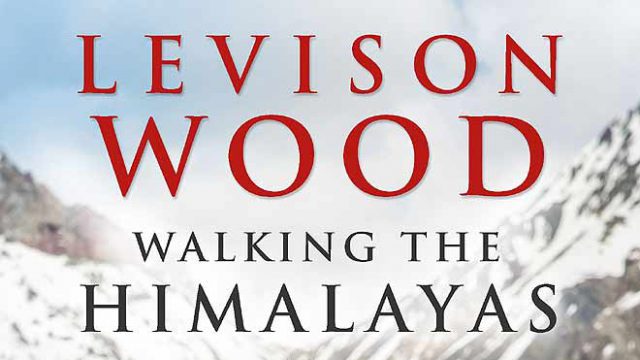There are very few genuine adventures left in the world, in these days of Google Maps and 4G connections, anywhere in the world, even in the remote Himalaya.
However, it’s still possible to find that adventure, if only you make a plan to do something quite audacious, like, say walking the length of the Himalaya.
Levison Wood is the yang to Robert Macfarlane’s yin. Both are hugely successful travel writers, young and British, but that’s where the similarities end. While Macfarlane’s the purist walker and chronicler of lost trails, Wood is the high definition adventurer. His epic overland trips are a multimedia affair, documented on camera and recounted in books, with tweets along the way. The 34-year-old Wood has been a Captain with the Parachute Regiment of the British Army, seen service in Afghanistan and other theatres of conflict around the world, and today is a best-selling travel writer and TV personality. His USP is the overland hike, and a couple of years ago, his walk from the source of the Nile to its mouth in the Mediterranean had resulted in a wildly popular TV series as well as a bestselling book. Not one to rest on his laurels, in 2015, he embarked on a similar trip to walk the Himalayan ranges, from the Wakhan Corridor in the Afghan Pamirs all the way through to Bhutan in the Eastern Himalaya, and make a documentary about it.
Wood has an easy and engaging voice, more eloquent in his writing than in the TV series. He flies to Kabul, and with the Afghan guide Malang Darya for company, he sets off up the Wakhan to cross the 5,000m Irshad Pass from the Pamir into the Hunza valley of the Karakoram in Pakistan. Borders are always tricky, especially in the high mountains of South Asia, so Wood has to come back to Afghanistan, cross over into Pakistan and make his way up to the Hunza Valley to resume his walk. From here, Malang and Wood walk down through Gilgit as far as they can, before Wood makes another detour to enter India through Punjab. First with his Indian friend Ashwin Bharadwaj and then with his old Nepali associate Binod Pariyar, Wood hikes through the Indian Himalayan foothills and the Nepali terai to Pokhara and Kathmandu. Post a helicopter flight to the Everest base camp, Binod and Wood continue their walk though West Bengal and Sikkim to Bhutan, where he ends his journey on a high ridge overlooking Tibet, beneath the sacred peak of Gangkhar Puensum.
To me, the Afghanistan-Pakistan stretch and Bhutan in the end make for the most compelling bits of the book, primarily because it’s always bemusing and a little embarrassing to read about India and Nepal through foreign eyes, especially ones as wide-eyed as Wood’s. Most of the narrative in the middle stretch is dominated by his and Binod’s horrible car crash in Nepal that the party was lucky to survive. It resulted in a 50-day break in his walk as he recuperated in England.
The slog through Nepal often takes on a purgatorial tone, grim and mean-tempered. However, the final stretch from Kathmandu to Bhutan regains the sense of wonder and joy that characterises the opening section of the book. On the whole, Walking the Himalayas is an engaging and ambitious book, though not as gripping as Wood’s Nile journey. My other grouse is that Wood concentrates too much on the foothills and not the high Himalaya. On the flipside, the narrative races along, and especially fun are Wood’s encounters with the shamanism of the region, ranging from a village shaman in Pakistan, an Aghori sadhu in India and a Tibetan monk in Bhutan who literally rolls the dice to tell Wood’s fate.




